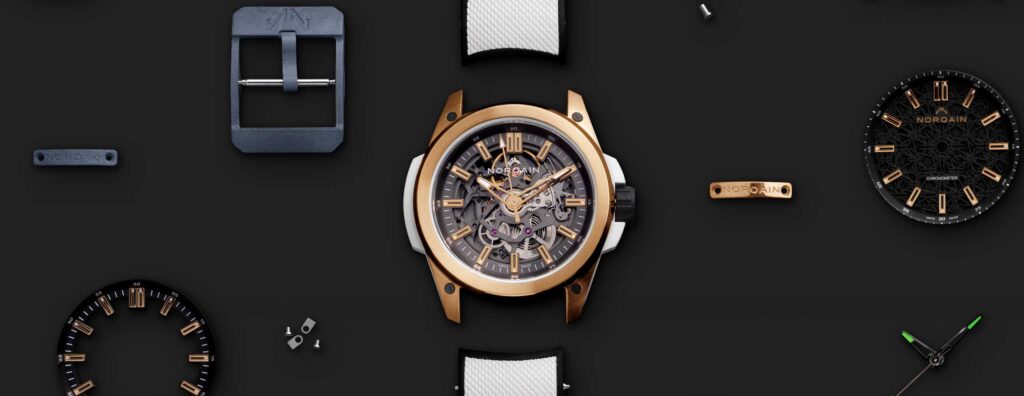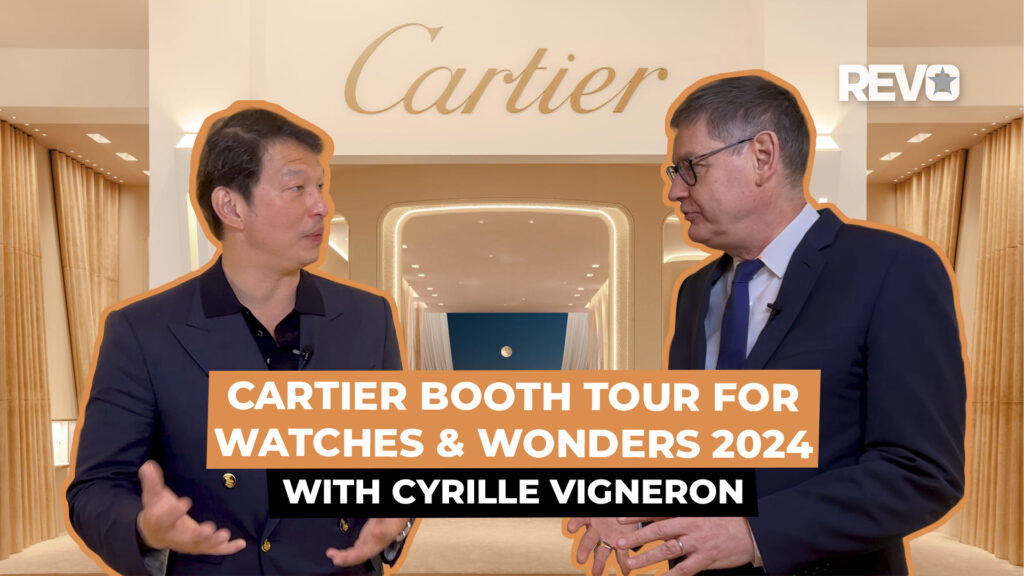Breguet
Ahead Of Its Time: Louis Moinet’s “Compteur de Tierces” From 1816 Is Now Earliest Known Chronograph
Breguet
Ahead Of Its Time: Louis Moinet’s “Compteur de Tierces” From 1816 Is Now Earliest Known Chronograph
The word “chronograph” is one which, like many technical terms in watchmaking, has drifted in meaning somewhat over the years, along with the development of the complication itself (interestingly the chronograph, despite its relative ubiquity today, was the last of the major classic complications to be developed, which speaks perhaps to the relative indifference of earlier generations to timing specific intervals as much as it does to the complexity of the complication.) One of the earliest attempts to create a watch capable of interval timing was the invention, by Jean Moïse Pouzait, in 1776, of a watch with an independent deadbeat seconds hand –“independent” in the sense that it could be started and stopped without stopping the rest of the going train. It had no return-to-zero mechanism, however. The first known use of the term “chronograph” seems to have been by the famous Nicolas Mathieu Rieussec, who developed a timing machine which marked intervals of time by placing a drop of ink on a rotating dial.
That was in 1822. Rieussec referred to the device, in the patent he was granted, as a “garde-temps ou compteur de chemin parcouru,” (time-keeper, or counter for a path traversed”) but he also referred to it as a “chronograph,” –literally, “time-writer” in Greek.
Improved Rieussec inking chronograph, designed for better portability
The chronograph in the modern sense of the word, it was not. Today, the term refers to a watch, with a coupling or clutch system that allows the timing mechanism to be driven by the primary going train of the watch, and a reset-to-zero mechanism that allows all the chronograph hands to be simultaneously re-set to zero. This mechanism developed slowly, and we owe its existence primarily to Adolph Nicole, who patented the heart-piece return-to-zero mechanism in 1844. He was active in Great Britain as Nicole & Capt (with his partner, Jules Philippe Capt) and in 1862, at the London Universal Fair, a watchmaker in his employ named Henri Féréol Piguet showed the first modern chronograph –a watch that kept time, and which also had a seconds counter that could be stopped, started, and returned to zero. In 1868, Auguste Baud created the first chronograph with the chronograph works on the movement, rather than the dial side, and during this period the first chronographs with 30 minute counters were made –though it was not until 1933 when that Breitling debuted the first two-button chronograph, that chronograph watches appeared which are essentially identical to those sold today.
The recent discovery of a remarkable device made by Louis Moinet (completed in 1816) has given the story of the chronograph an entirely new beginning, however. Louis Moinet is a name which has become known in recent years as that of the modern company that bears his name, and it’s thanks to that company –and its CEO, Jean-Marie Schaller, that Moinet’s chronograph has been re-discovered. The Moinet chronograph, unlike Rieussec’s, looks eerily modern –and it is astonishingly ahead of its time. Perhaps its most unusual feature is the frequency at which it beats –it runs at an amazing 216,000 vph, or sixty vibrations per second.
Louis Moinet’s “compteur de tierces” (image by Ian Skellern; used with permission.)
The history of the chronograph –which Louis Moinet called a compteur de tierces, or “thirds counter,” –is difficult to trace. It was part of the collection of a wealthy Northern European noble family before coming up for auction at Christie’s in May of 2012. According to independent expert Arnaud Tellier (former director and curator of the Patek Philippe Museum) the watch had been untouched for 150 years, and though Tellier was aware of the possible existence of such a watch –Moinet had mentioned it in his Traite d’Horlogerie, published in 1848 –the idea that someone could have made a 30 hz watch in 1816 seemed too incredible to be believed. Not until Schaller had the watch cleaned and restored was it clear that it was indeed exactly what Moinet claimed.
Movement, Louis Moinet compteur de tierces (image by Ian Skellern; used with permission.)
The Moinet compteur de tierces has four registers –a very long central hand (essentially a foudroyante, or “lighting” hand) rotates once per second, and three other registers show elapsed seconds, minutes, and hours. One of the two pushers starts and stops the watch, while the second re-sets the central 1/60th second hand to zero (a second manual operation is necessary to re-set the other hands to zero.) The mechanism for re-set of the foudroyante hand is not the same as in a modern chronograph (there is no heart-piece cam.) Instead, we’re told by Louis Moinet that it ” . . . is not governed by a column-wheel, but by a double-action shuttle system that acts directly on the balance-wheel, then on the escape-wheel to bring the 60ths of a second hand to zero.”
Left, fusée (a watch with chain-and-fusée is wound by winding the chain onto the fusée from the mainspring barrel); right, state-of-wind indicator; center, 30 tooth escape wheel. (image by Ian Skellern; used with permission.)
The movement is obviously the work of a master; the level of craftsmanship is extremely high, with beautifully polished steelwork, gilt plates and bridges, and heat-blued screws. The most remarkable part of the watch, however, is certainly the oscillating system. The watch uses a ruby cylinder escapement, which may be part of the reason horological historians have been skeptical about the existence of the watch in years past –in a cylinder escapement, the escape wheel teeth pass through a slot in the hollow of the cylindrical balance staff, and as the balance swings the leading tip of the escape wheel tooth maintains contact with, and pressure against, the interior of the staff, making such an escapement apparently very unsuitable for a fast beat watch. Good cylinder escapements use ruby for the inner surface of the cylinder, to reduce friction and wear, and the Moinet watch does as well –it also uses jewels for the going train pivots, for a total count of 13 jewels (including the ruby cylinder escapement.)
Movement, disassembled to mainspring barrel, fusée and chain, and going train
The key to making a fast beat watch is to use a stiffer-than-normal balance spring, and a balance that vibrates through a relatively short arc. The Moinet compteur de tierces has a steel balance spring with seven coils, and the balance itself is not the usual annular type –instead, Moinet used a foliot, or bar-shaped balance, with two adjustable platinum timing weights. The weights are actually flattened in the plane of the movement –Moinet may actually have been aware of the potential for aerodynamic drag to interfere with the oscillations of the foliot and designed the weights accordingly. There’s also a curb-pin regulator which works in the Moinet watch just as it does in any other –by altering the effective length of the balance spring.
Escapement and oscillator: bottom, 30 tooth escape wheel; above, spiral balance spring with foliot-type balance fitted with platinum timing screws. (Image by Ian Skellern, used with permission.)
The watch has a chain-and-fusée system for maintaining even delivery of energy to the balance, and a state-of-wind indicator as well. As it was meant to time successive astronomical transits, it has a very long power reserve (especially for such a fast-beat escapement) –30 hours.
As is clear from the video provided by Louis Moinet, the foliot beats through a fairly small arc.
The impetus for developing this watch was rather more noble than horse-racing –Louis Moinet created it in order to measure with high precision the time between successive astronomical transits of heavenly bodies. He wrote, in the Traite d’Horlogerie:
“This invention came to me during my observations in the following circumstances. I had acquired a small mobile quadrant by the famous Borda (maker of the entire circle). This instrument, of excellent English manufacture, was balanced on rubies, and by an ingenious system of counterweights was supposed by its maker to be preserved by its own inertia from the motion of the ship, and to provide at sea observations almost as exact as those obtained on land. But the project was not successful.”
State-of-wind indicator
“Having acquired the instrument for another purpose, I added, for terrestrial observations, an azimuth circle graduated in minutes with a vernier by the late Fortin, two intersecting levels, a polished mobile axis and a three-footed stand with levelling screws and a scale etc. However the scope’s narrow field of vision put the reticle lines very close together, and it was to remedy this inconvenience of failing to see a line, that I thought up the compteur de tierces, which worked very well by giving me a precise distance between the reticle lines.”
Astronomical transit instruments were specialized telescopes with very fine lines in the telescope’s visual field –often one central line, with two on either side (which through trial and error, astronomers found produced more accurate readings.) Generally, transits were timed in the observatory by watching a star through the transit telescope and listening to the ticking of a seconds pendulum regulator clock (it was for that reason that astronomers preferred regulators with a loud tick.) The lines were often made of spiderweb, and one of the tasks of the astronomer’s assistant was to gather web strands for use in the eyepiece of the telescope.
CEO and Creative Director of Louis Moinet, Jean-Marie Schaller, with the compteur de tierces during its official presentation
There was, when the Moinet compteur de tierces was announced, some question as to whether or not it should be called a chronograph, rather than a counter or stopwatch, as it does not tell time but only measures elapsed time. However, the term “chronograph” was used by Rieussec for his timer, and for decades Rieussec has been called the inventor of the chronograph with no quibbles, so it hardly seems just to deny the term to Moinet, who made, it has to be said, a far more advanced timing device than Rieussec’s inking chronograph. In any case, any argument over nomenclature seems silly in the face of what Moinet accomplished –to have made a 30 hz watch in 1816, with a return-to-zero mechanism of unusual sophistication, is an achievement in watchmaking to stand alongside the development of the balance spring or the invention of the tourbillon. Moinet has been often referred to since the announcement of the discovery of this instrument as the true father of the chronograph; even more importantly, it seems we must now acknowledge that he is the father of the high frequency escapement as well.


















